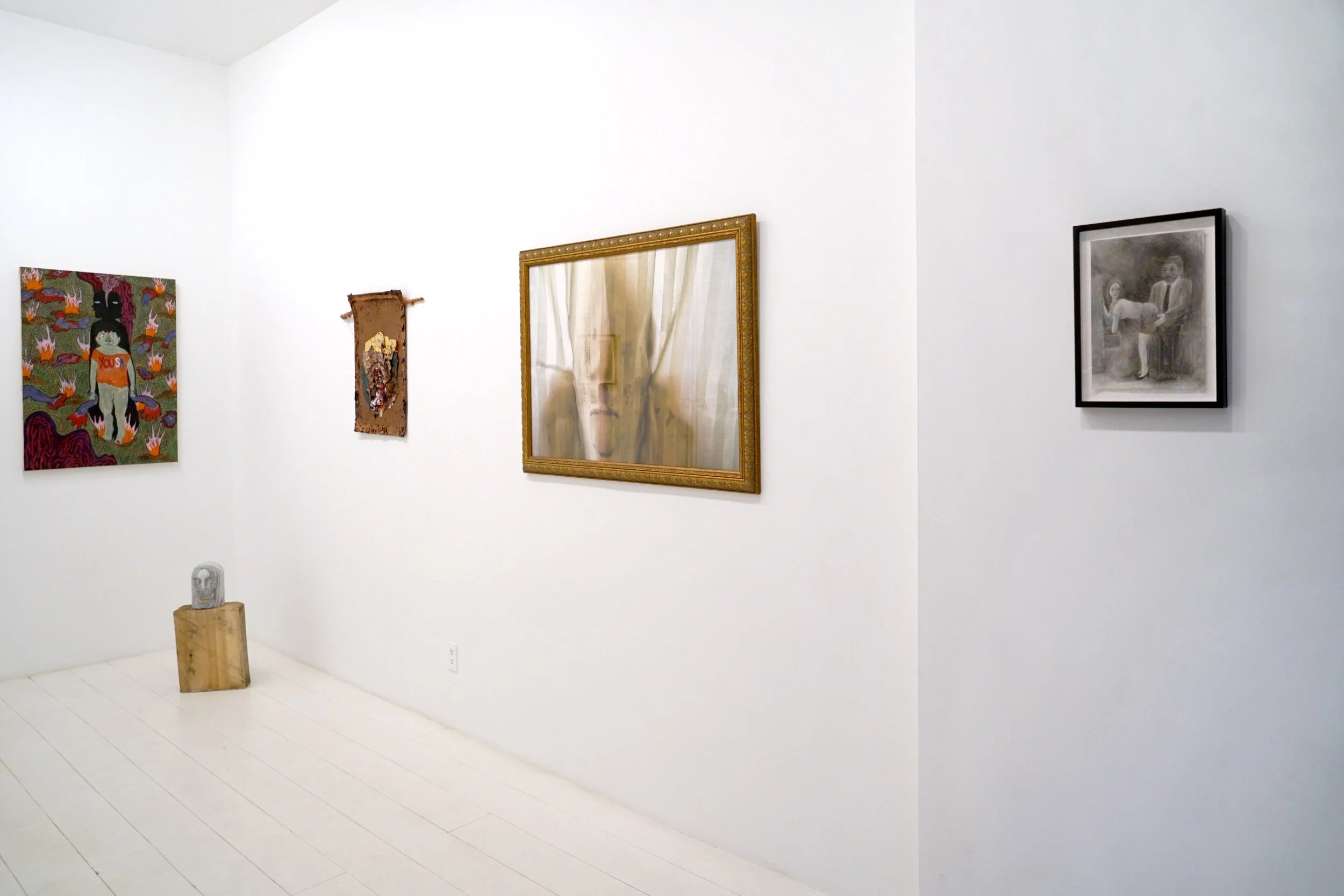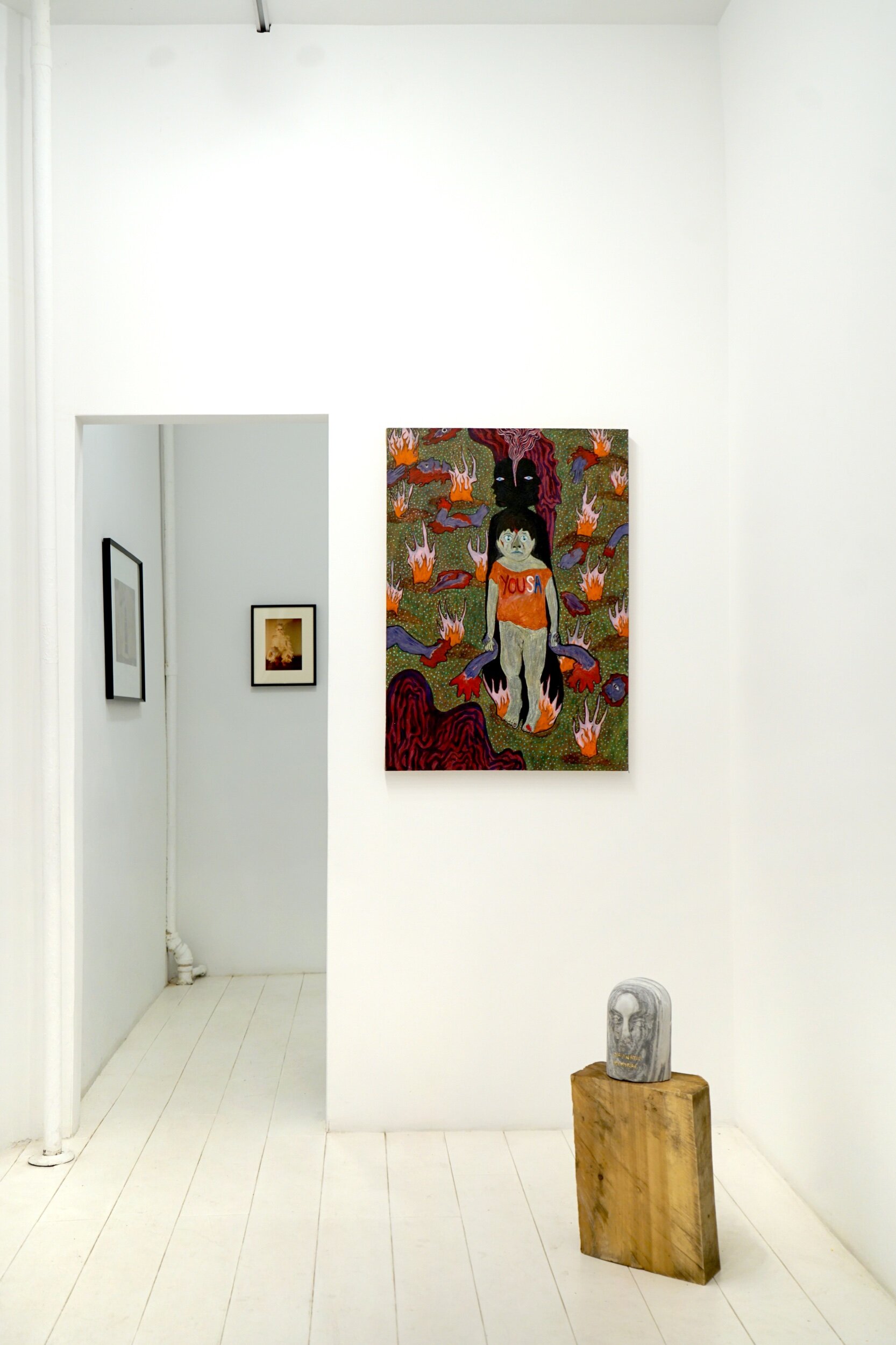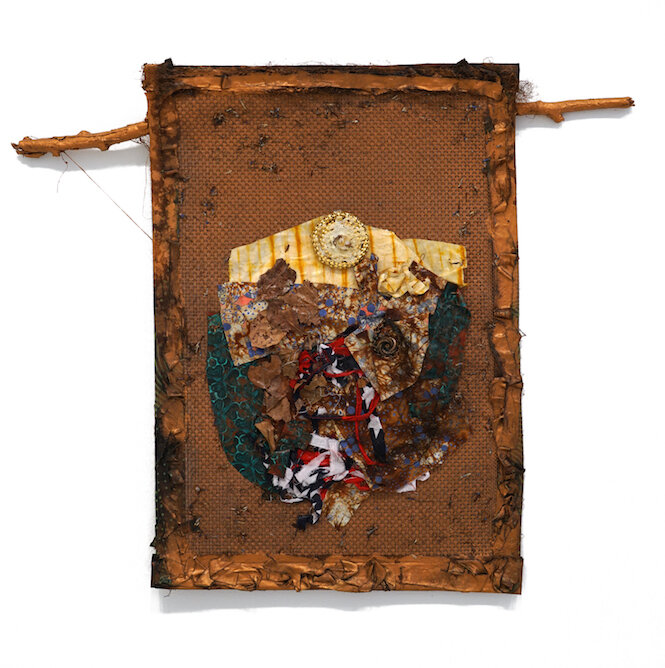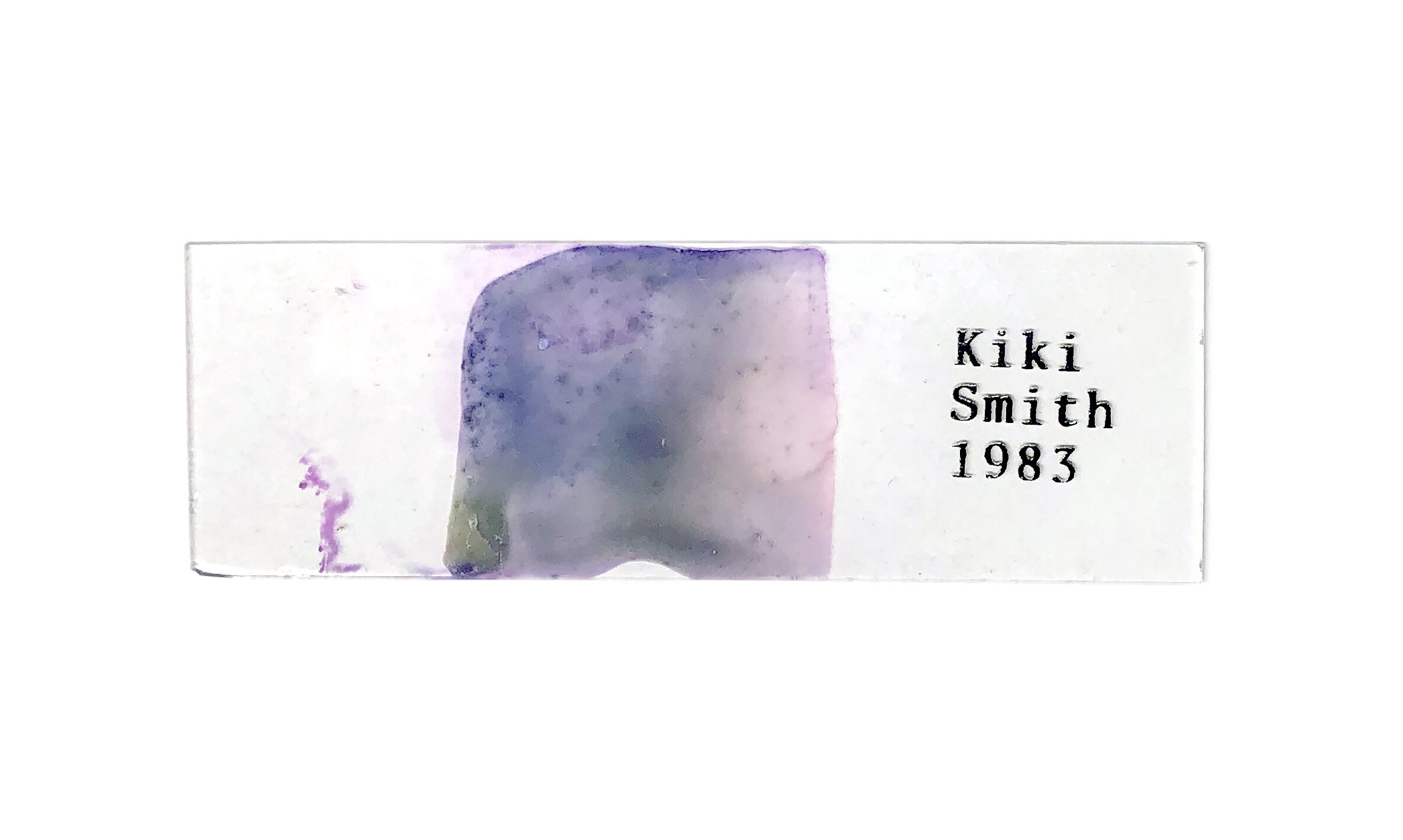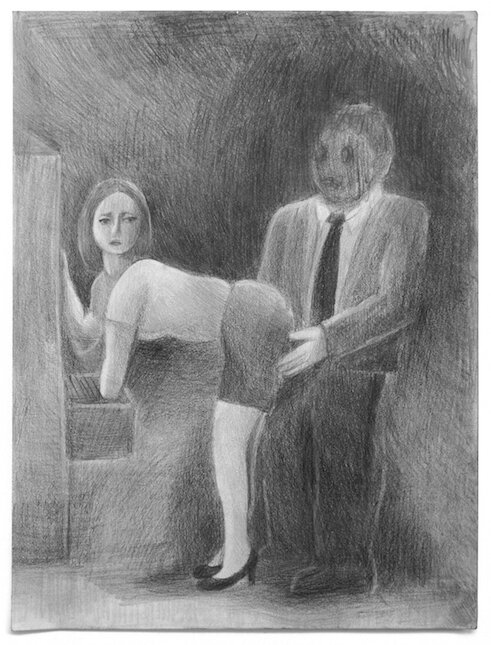MAD
curated by Angela Conant
Adama Delphine Fawundu, Vanessa Gully Santiago, Haley Hughes, Ana Mendieta, Kiki Smith, Yasmeen Sudairy and Rajaa Alhajj, and Angela Conant, with design objects by E for Effort.
August 9 - September 8 2019
Assembly Room
MAD was a group exhibition presented by Assembly Room and curated by Angela Conant, featuring works by Adama Delphine Fawundu, Vanessa Gully Santiago, Haley Hughes, Ana Mendieta, Kiki Smith, Yasmeen Sudairy and Rajaa Alhajj, and Angela Conant, with design objects by E for Effort.
To attach chicken feathers, one by one, to a nude woman’s body, is akin to setting a painted figure on fire, or making a self portrait out of blood.
Kiki Smith’s piece Untitled (1983) has three components: a glass microscope slide, the artist’s blood, and silkscreened text reading “Kiki Smith 1983”. At the time when Smith made this unconventional self-portrait, blood was feared. That year, the FDA imposed a lifetime ban on donating blood for all men who have ever had sex with another man. It was also the year when AIDS awareness activist Larry Kramer began his seminal essay and call-to-action this way: “Our continued existence depends on just how angry you can get.” Smith has often been typecast as an artist-who-made-art-about-AIDS, and, alternatively, a Feminist Artist. She rejects both reductive labels. Smith’s general refrain is simply that she makes what occurs to her to make, or what “becomes apparent.” It was apparent, in 1983, that identity and personhood depended on the quality of one’s blood, and that existence depended on the power of anger.
In a 2019 New York Times Magazine article, Claudia Rankine wrote, “It’s hard to exist and also accept my lack of existence.” In the same text, Rankine references “the sociological term “social death” to explain my there-but-not-there status in a historically anti-black society.” Adama Delphine Fawundu’s assemblage figures are sometimes faceless, their bodies passing between object and photograph. She incorporates fragments of American flags, hair and textiles, along with autobiographically significant patterns, objects and fibers, to complete a whole figure from parts. The ethos of assemblage echoes Fawundu’s sentiments about the neither-here-nor-there feeling of being an American with roots in Sierra Leone. Though the artist makes these constructions to fulfill her own vision, the works are a service to the viewer. Fred Moten writes that the critique of western civilization, “shows up in a range of unpaid, imposed pedagogical duties carried out at various faculty meetings and conferences; in all its justifiable, fetishized performativity, it is often manifest as a sublation of anger mistaken for uncut ire or the absence of ire.”
Vanessa Gully Santiago’s graphite drawings convey moments of vulnerability and imbalances of power, with a focus on the perspectives of women. Blunt portrayals of uncomfortable situations evoke the kind of helplessness that is felt in the face of abuse. Her treatment of material spans from the delicacy and smoke of Seurat’s conté drawings to an aggressive shine; making her hand’s relationship to the drawing’s surface a parallel dynamic to that of her characters’. Flipping between mundane office cubicles and dream-like scenes with ghostly figures, each drawing is deeply rooted in the psychological, revealing nightmares in our mundanity.
Ana Mendieta’s Bird Transformation (1972) exemplifies the artist’s propensity to blend body with earth. In her case, the impulse was driven by her childhood separation from her Cuban homeland wrought by governmental and catholic forces. Mendieta covered the body of a fellow student with white feathers, morphing the female human body into a sacrificial creature (a sister of the decapitated beast Mendieta offed in service of the work Untitled (Death of a Chicken), 1972), who presents herself, in this documentation image, in a squat, legs open to the viewer. Inspired by the violent work of the Viennese Actionists, Mendieta wields the two-edged sword of confrontation and vulnerability.
Angela Conant works in stone, as if to secure a time-sure legacy. Her flesh-like forms reference the body, sometimes obliquely, sometimes directly, but always with a combination of formal study and perversion of the human form. In this work, she has incorporated the text DAMNATIO MEMORIAE, which translates directly to mean “damnation of memory,” and refers to an ancient roman practice of erasing a person from collective or cultural memory by removing written or pictorial documentation of them; a form of punishment considered worse than death. Conant brings this idea to present context, questioning what forces control our historical narrative in the making and what stories have been lost to time.
Yasmeen Sudairy and Rajaa Alhajj are artists in Saudi Arabia, where an exhibition of their paintings scheduled for this past June was unceremoniously cancelled by the Saudi Ministry of Culture, the exhibition’s would-be funders. Sudairy believes the governmental organization checked her public social media accounts. “There are some specific reasons I’m sure,” Sudairy wrote, “(my sarcasm regarding ISIS, my opposition to the Yemen war, I also worked for an Iranian magazine) but they did not specify them.” The digital images on view are documentation of the censored paintings, photographed by Anhar Salem.
Haley Hughes’ epic tableaus invoke Florine Stettheimer’s intimacy of scale in a rage against what Donna Harraway calls the Capitalocene. In Hughe’s work, everything is on fire. Fire is her consistent metaphor for an unchecked, destructive force of pain and suffering. It is the medium of natural disaster and war, and also of sainthood and martyrdom. Hughes transforms her figures into saints, adorning them with licks of flame, applying each orangey brush stroke much like Mendieta adhered each white feather, or arranged flowers on earthly effigies, as on a gravesite.
Fire, like anger, spreads easily from one susceptible entity to another, overwhelms and insists on attention, and demands emergency response, lest it consume us all.
- Angela Conant, 2019
Also on view: The Enough Cuff by E for Effort, the collaborative design partnership of Beka Goedde and Rachel Ostrow. Proceeds from this wearable protest object are donated to a cause designated per color of cuff.
Assembly Room
191 Henry Street New York, NY 10002
http://assemblyroom.nyc/

